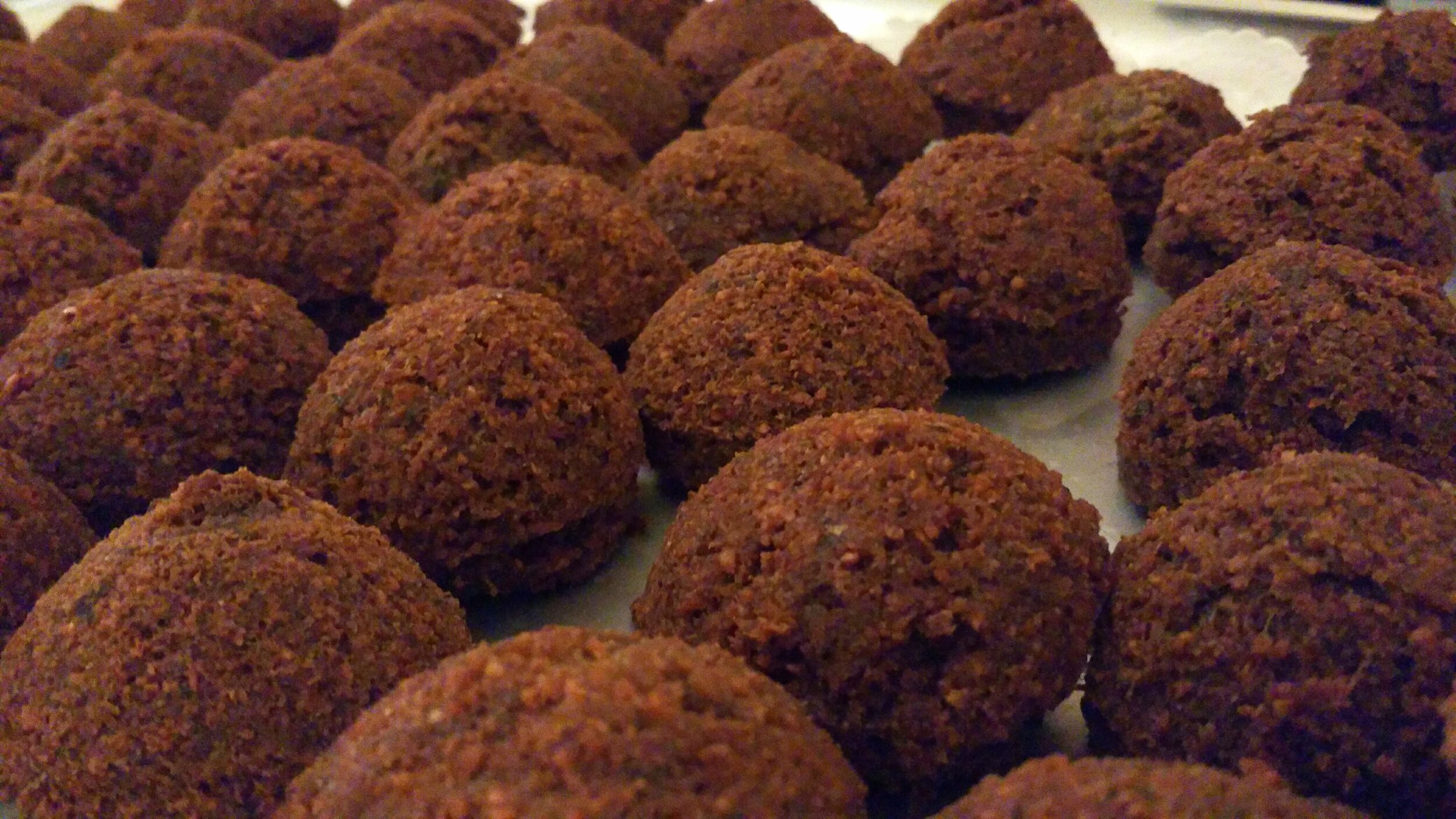JORDAN EATS: Must Eat Regional Food
Red Cave Restaurant. Wadi Musa, Jordan. Photo by Deets on Eats
Dear Foodie Fam,
Here is a list of the Jordanian foods I recommend for visiting foodies!
If you have any to add, comment below!
Mansaf. Tawaheen al-Tawa. Amman, Jordan. Photo by Deets on Eats
Mansaf
Rooted in Bedouin culture, this is said to be Jordan’s national dish. It’s now one of my favorites, ever. Its main flavor comes from savory meat cooked in yogurt.
Tender meat (traditionally lamb but sometimes chicken, sheep or camel) is served over aromatic white rice made with a heavy domestic margarine. The rice and meat are piled atop shrak - a paper thin Jordanian flatbread. Toasted nuts (pine or peanuts) and parsley are scattered on top of the meat. Jameed - a cheesy, tangy yogurt sauce - is drizzled on top of it all. It’s often served with tomato cucumber salad.
Mansaf is eaten communally. It was used to keep peace between opposing families or tribes. The heads of these factions would visit each other, sacrifice a sheep and enjoy mansaf together.
Charles Haynes, Wikipedia
Shaklish
Shanklish - a popular meze dish - is a Levantine cheese of cow’s or sheep’s milk. It often comes unformed and ungarnished but is traditionally rolled into balls, coated with za’atar and Aleppo pepper, aged and dried. Shaklish gets its distinct flavor from thyme and is stronger the longer it’s been aged.
This dish is usually eaten with Arabic salad, mashed up with egg or with cucumbers, mint and olive oil in pita bread.
Muglaba - Red Cave Restaurant. Wadi Musa, Jordan. Photo by Deets on Eats
Muglaba
The earliest appearance of a Muglaba recipe is in a 13th century medieval book. Since then, it’s been a staple Jordanian homemade meal.
“Muglaba” means “upside down”. It gets its name from how it is served: the dish is turned upside down table side. Morsels of chicken, potatoes, rice, aubergine, cauliflower and vegetables are buried under the rice which is topped with fresh parsley and fried nuts.
Muglaba is usually eaten communally from the pot it was slow cooked in. It’s served with yogurt and salad.
kanafeh
When I first had this, the person who gave it to me said the name of it was “heaven.” Oh, gosh… it tasted like it, alright.
Kanafeh was spread with the Ottoman rule through the Levant. It consists of a layer of crispy pastry threads (noodles or semolina) laid over tangy white cheese or cream and often coated in gooey rose syrup, ghee and ground pistachios or cashew nuts. The most distinct flavor in kanafeh comes from its cream.
Tawaheen al-Tawa. Amman, Jordan. Photo by Deets on Eats
Limonada
This cooling, frothy green drink is made of lemon juice and fresh mint. The one I had was so sweet it tasted like strawberry.
Popo Le Chien. Wiki Commons
Falafel
Falafel usually appears as a snack or light meal. It’s often served in pita bread like a sandwich or plated alongside mint, onion, tomatoes and flatbread. Falafel’s texture and shape resembles that of little patties or nuggets. It’s made of ground up chickpeas and spices rolled into balls and deep fried.
Vaikoovery. Wiki Commons
Shawarma
Another food spread by the Ottoman empire, shawarma is made of luxuriously fatty blended lamb, beef, or chicken.
It’s made using a mesmerizing traditional technique: shavings of meat are sliced off a slow rotating pit where a cone-shaped pile of thin, packed sliced meat drips in its own fat. The meat is often nestled into pockets of pita bread amongst raw onions and za'atar. Shawarma often takes its flavor from sesame seeds, sumac, garlic sauce, tahini and/or pickled vegetables.
Zaarb
Zaarb is a kind of Bedouin BBQ that happens underground! Morsels of marinated meat and vegetables are baked for 1-2 hours in a shaft with hot coals. Often, zaarb is made using a tiered rack with vegetables and meat separated into levels.
This smokey dish is eaten using hands with taboon bread, rice, Arabic salad, humus and/or moutabel.

Labneh
Labneh is a sour, lush, creamy strained yogurt eaten from the bowl. Its texture lies somewhere between cheese and yogurt. It’s regularly served crowned with herbs and olive oil at breakfasts. Because I love yogurty food, I love seeing labneh on a table!
Other Foods to try (also found through out the Levant):
Arabic salad (finely diced cucumber, tomatoes and bell peppers dressed in lemon juice and lots of olive oil)
Tea
Fattet hummus
Galayet Bandora
Kobbeh
Makmoura
Mannakish
Meze meals
Moutabel
Mujadara
Mulukhiyah
Musakhan
Rashouf
ShorBAt Adas
Warak Enab

















